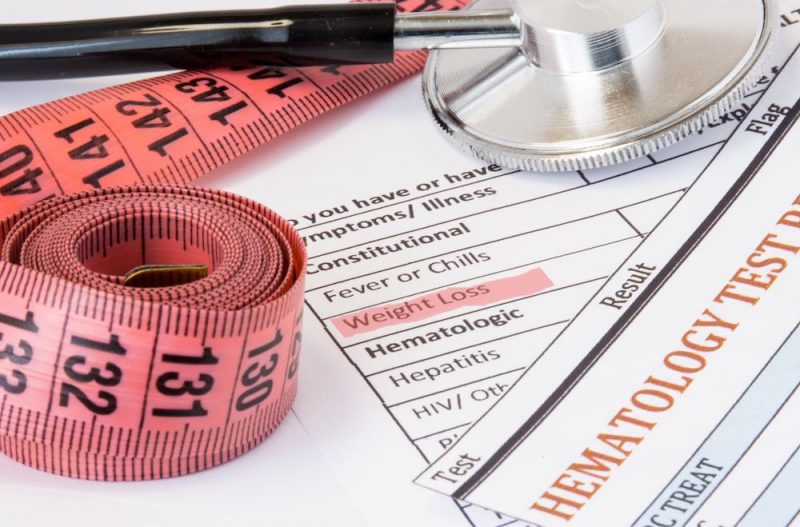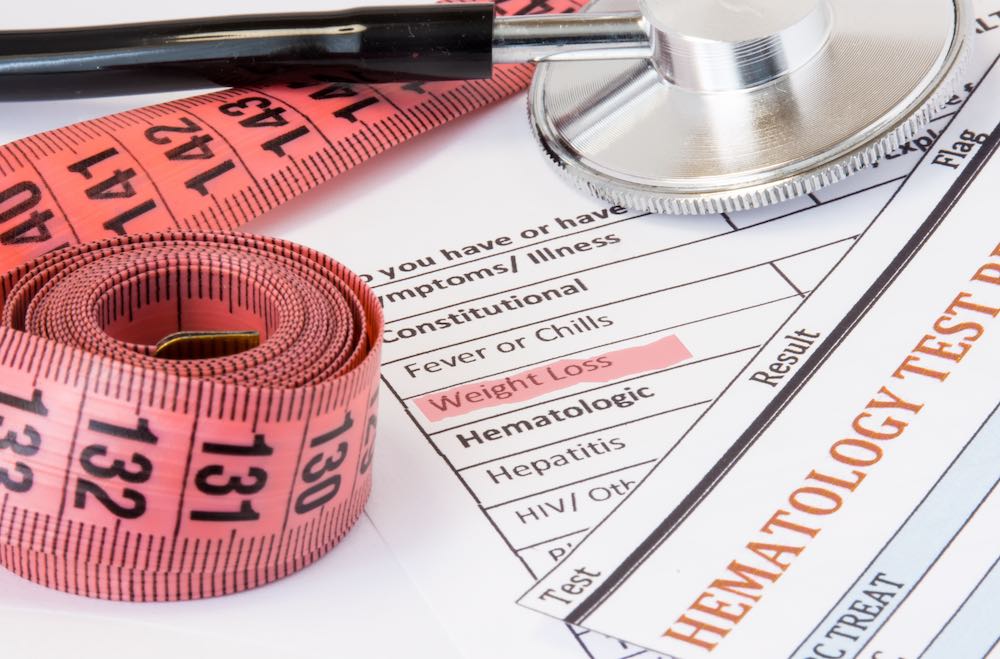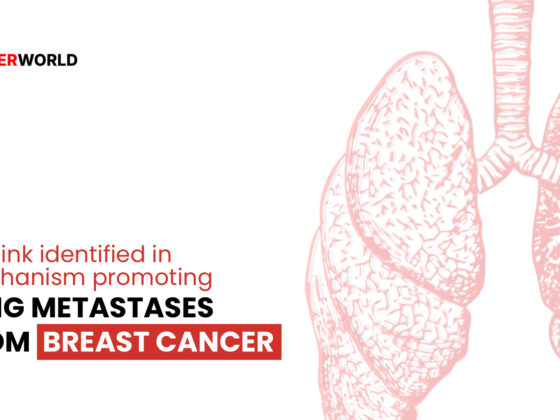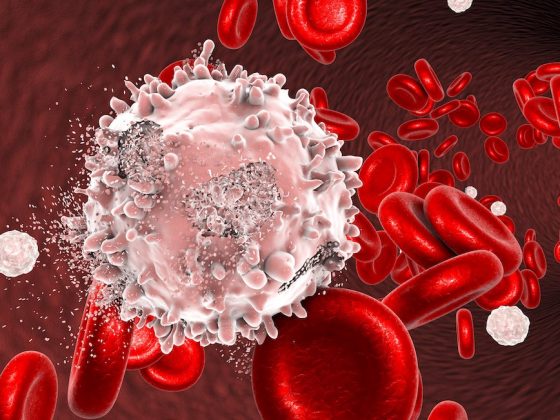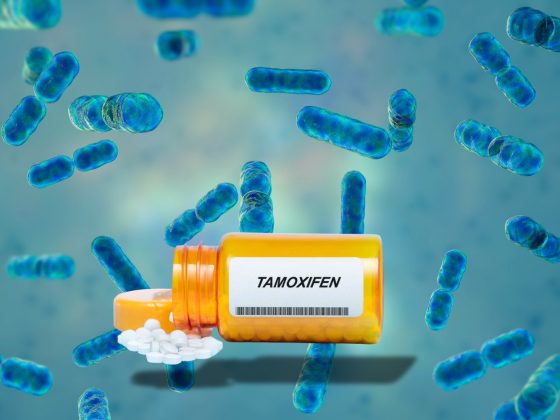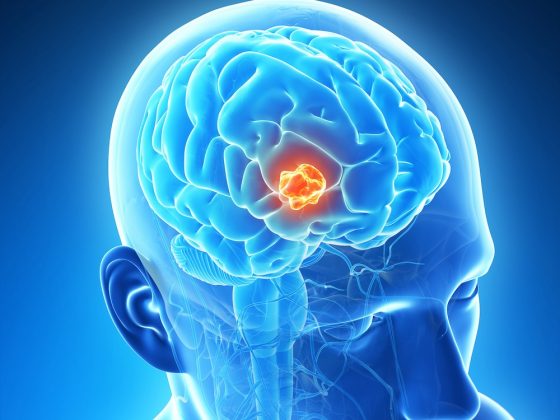Distinct patterns of genes have been shown to be active in the tumours of non-small-cell lung cancer patients who go on to develop cachexia, including high activity of the protein GDF15. The study, published in Nature Medicine, April 2023 issue, also demonstrated that participants with low subcutaneous adipose tissue, visceral adipose tissue, or skeletal muscle tissue (in the bottom 20%), at the time of diagnosis with non-small-cell lung cancer (NSCLC), had shorter overall survivals.
“Our study provides an unbiased overview on body composition, tumour genomic and transcriptomic features as well as circulating proteins in the context of cancer cachexia,” Othman Al-Sawaf, the first author, tells Cancerworld. “This provides insights into how body composition alterations are associated with survival, but also genes, pathways and proteins that are upregulated or more abundant in patients with cachexia.”
Cachexia, a condition involving involuntary progressive weight loss as a result of reduction of skeletal muscle mass with or without depletion of adipose tissue, is estimated to occur in 50 to 80% of advanced cancer patients and accounts for up to 20% of deaths due to cancer. “A biological understanding of this devastating condition has long eluded researchers. We are particularly excited about trying to find alterations in the cancer or blood that can help identify which patients are at risk of developing cachexia in the future so that we can intervene before this happens,” says Miriam Jamal-Hanjani, from UCL Cancer Institute, London, who led the study.
The current study was part of TRACERx (Tracking Cancer Evolution Through Therapy), a multicentre, longitudinal study of more than 820 patients diagnosed with stage I–III NSCLC who are being followed for five years from diagnosis through surgical resection to either cure or eventual cancer relapse and death. The concept behind TRACERx, funded by Cancer Research UK, is to provide information to help develop future therapeutic strategies.
The cachexia part of TRACERx has three aims:
- To systematically profile body composition of patients with early-stage NSCLC using computed tomography (CT) imaging analysis of skeletal muscle (SKM), visceral adipose tissue (VAT), and subcutaneous adipose tissue (SAT) to explore associations between baseline measures and clinical outcomes. Measurements were taken at the level of the third lumbar vertebra.
- To examine how body composition measures change over time in relation to clinical outcomes and how this can be used to identify individuals who develop the cancer-associated cachexia phenotype.
- To explore tumour genomic, transcriptomic and plasma proteomic landscapes for potential molecular mechanisms and mediators of cancer-associated cachexia.
For the study, participants were grouped according to body composition distribution into sex-adjusted bottom 20th, middle 20–80th, and upper 20th percentiles, representing low, normal, and high values.
The results showed:
- Individuals in the bottom 20th percentile of the distribution of skeletal muscle or adipose tissue area at the time of lung cancer diagnosis had significantly shorter lung-cancer-specific survival compared to participants in the middle 20–80th percentile, with adjusted hazard ratios 2.09 (95%CI 1.33–3.30, P=0.001) for SAT; 1.73 (1.10–2.72, P=0.019) for VAT; and 1.44 (0.95–2.19, P=0.088 ) for SKM.
- Participants in the bottom 20th percentile also had trends towards worse overall survival compared to those in the middle 20–80th percentile, with adjusted HRs of 1.49 (95%CI 1.02–2.16, P=0.037) for SAT; 1.38 (0.95–2.01, P=0.093) for VAT; and 1.28 (0.91 1.78, P=0.151) for SKM.
Primary NSCLCs from individuals who went on to develop cancer-associated cachexia were characterised by enrichment of inflammatory signalling and epithelial–mesenchymal transitional pathways, and differentially expressed genes including cancer-testis antigen MAGEA6 and matrix metalloproteinases, such as ADAMTS3.
An exploratory proteomic analysis performed in a subset of 110 individuals from TRACERx found a significant association between circulating GDF15 (growth differentiation factor 15), and loss of body weight, skeletal muscle, and adipose tissue. GDF15 is a protein involved in a variety of cellular processes, including regulation of inflammation, cell growth and apoptosis. The same association between circulating GDF15 levels and body weight loss had been observed in an independent cohort of participants with advanced metastatic NSCLC, suggesting that this association is agnostic of disease stage. “On the one hand, this suggests that GDF15 could be an indicator of cachexia, although further studies are required to substantiate this, and on the other hand that GDF15 might be causally linked with cachexia, since mouse studies showed that inhibiting GDF15 alleviates cachexia symptoms,” explains Al-Sawaf.
From the current study “amidst the plethora of proposed pro-cachectic mediators, GDF15 emerges as a differentially expressed and clinically measurable, protein,” with the potential to translate to a biotherapeutic target.
Between diagnosis and relapse the investigators observed that 24% of participants experienced a loss across all three body compartments, but subgroups of participants with pronounced or isolated loss of SAT, VAT or SKM were also identified. This, write the authors, suggests the possibility that distinct cancer-associated cachexia clinical phenotypes may exist, whereby body composition compartments, individually or in combination, “may be preferentially affected”.
“We show that automated pipeline technologies unlock the potential to leverage CT imaging embedded in medical oncology practice to identify individuals at risk of developing CAC [cancer-associated cachexia], simultaneously providing the scientific means to study potential drivers and mechanisms of cachexia pathophysiology,” write the authors.
Next, the group are planning to expand their cohort by analysing more CT images of patients in TRACERx, and to track body composition changes for several years, going beyond the two time points of cancer diagnosis and first relapse. “We are also using other methods to identify tumour and host alterations in the context of cachexia, such as metabolomics, to further understand potential mediators of cachexia, and thereby identify potential therapeutic targets,” says Al-Sawaf.
The first in-human study of a GDF-15 neutralising antibody (CTL-002) was presented at ESMO last year, given both as monotherapy and in combination with nivolumab to patients with advanced solid tumours who had exhausted all available therapeutic options.

